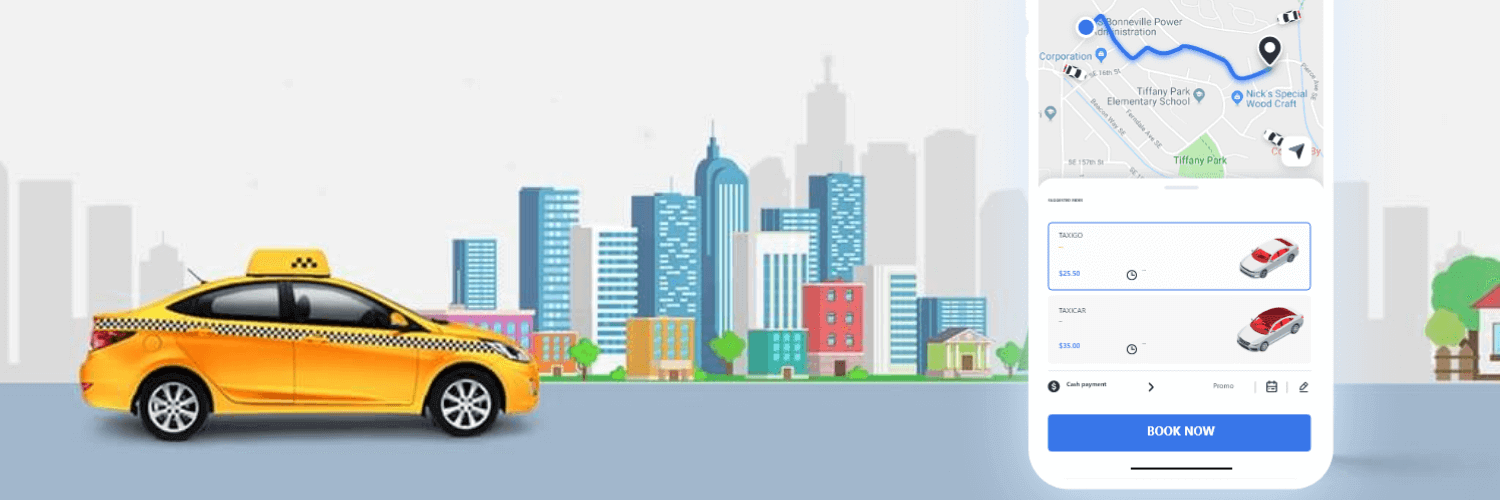Trends and Technologies Shaping Taxi App Services

The taxi industry has undergone a remarkable transformation in recent years, driven by the integration of cutting-edge technologies and innovative trends. As the world embraces digitalization and connectivity, the concept of developing taxi apps has become more than just a catchphrase – it signifies the convergence of convenience, efficiency, and user-centric experiences in urban transportation.
1. Real-time Tracking and Navigation
One of the key trends shaping taxi app services is real-time tracking and navigation. GPS-enabled apps empower passengers to monitor the precise location of their booked ride, estimate arrival times, and even share ride progress with friends and family. For drivers, advanced navigation systems ensure optimal routes, minimizing travel time and enhancing overall service quality.
2. AI-driven Ride Optimization
Artificial Intelligence (AI) is revolutionizing the taxi industry by enabling predictive analytics and intelligent route optimization. AI algorithms consider factors such as traffic patterns, historical data, and real-time road conditions to suggest the most efficient routes, reducing both travel time and fuel consumption. This technology not only benefits passengers but also contributes to a greener environment.
3. Contactless Payments and Digital Wallets
In response to the global shift towards contactless transactions, taxi apps are embracing digital payment options and integrating various digital wallets. Passengers can seamlessly pay for their rides using their smartphones, eliminating the need for physical cash transactions. This trend enhances convenience, security, and financial transparency for both passengers and drivers.
4. Multi-modal Integration
To offer a comprehensive solution for urban mobility, taxi apps are increasingly integrating multi-modal transportation options. Users can combine taxis with public transport, shared bicycles, or even ride-sharing services for a seamless end-to-end journey. This integration enhances accessibility and encourages more sustainable travel choices.
5. Personalized User Experiences
Personalization is a significant trend in the taxi app industry. Apps analyze user preferences, travel history, and behavior patterns to offer tailored recommendations and promotions. Whether it’s suggesting preferred routes, offering discounts on frequently visited locations, or providing customized ride options, personalization enhances user engagement and loyalty.
6. Safety and Security Enhancements
Safety is a top priority for taxi app services. Advanced safety features, such as in-app emergency buttons, real-time driver monitoring, and two-way ratings, ensure a secure environment for both passengers and drivers. Additionally, some apps employ biometric authentication to verify the identity of drivers and passengers, further enhancing trust.
7. Electric and Autonomous Vehicles
The push for sustainability has led to the increasing adoption of electric and autonomous vehicles in taxi fleets. Some taxi apps are integrating electric vehicle options to provide eco-friendly transportation choices. Moreover, as autonomous vehicle technology advances, taxi apps are preparing to incorporate self-driving cars into their services, potentially reshaping the industry once again.
8. Geofencing and Location-based Services
Geofencing technology allows taxi apps to create virtual boundaries and trigger specific actions based on a user’s location. For instance, users can receive special promotions or discounts when they enter a specific area or approach a popular destination. Geofencing enhances engagement and provides an additional layer of value to users.
9. Sustainability and Social Responsibility
Develop taxi app are increasingly recognizing the importance of social and environmental responsibility. Some apps are pledging to offset carbon emissions, contributing to greener transportation alternatives. By aligning with sustainability goals, taxi apps are appealing to environmentally conscious users and contributing to an eco-friendlier urban landscape.
10. Seamless Integration with Smart Cities
As cities become smarter and more connected, taxi apps are evolving to integrate seamlessly with smart city infrastructure. This includes real-time traffic data sharing, integration with public transport systems, and collaboration with municipal authorities to optimize traffic flow and reduce congestion. These efforts contribute to the overall efficiency and functionality of urban transportation networks.
Conclusion
The developing taxi app encapsulates the dynamic landscape of taxi services, driven by trends and technologies that prioritize user convenience, safety, sustainability, and innovation. As the industry continues to evolve, taxi apps will play a pivotal role in shaping the future of urban mobility, offering solutions that cater to the diverse needs of passengers and drivers alike.



